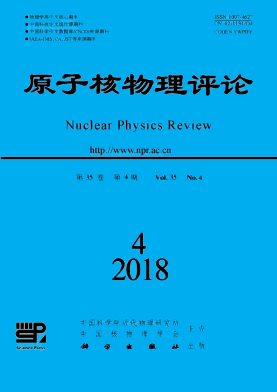|
[1]
|
MAYER M G. Phys Rev, 1949, 75:1969. |
|
[2]
|
HAXEL O, JENSEN J H D, SUESS H E. Phys Rev, 1949, 75:1766. |
|
[3]
|
MAYER M G, JENSEN J H D. Elementary Theory of Nuclear Shell Structure[M]. New York:Wiley, 1955. |
|
[4]
|
DE SHALIT A, TALMI I. Nuclear Shell Theory[M]. New York:Dover, 2004. |
|
[5]
|
HEYDE K L G. The Nuclear Shell Model[M]. Berlin:Springer, 1990. |
|
[6]
|
CAURIER E, MARTÍNEZ-PINEDO G, NPWACKI F, et al. Rev Mod Phys, 2005, 77:427. |
|
[7]
|
RAINWATER J. Phys Rev, 1950, 79:432. |
|
[8]
|
BOHR A. Mat Fys Medd Dan Vid Selsk, 1952, 26:1. |
|
[9]
|
BOHR A, MOTTELSON B R. Mat Fys Medd Dan Vid Selsk, 1953, 27:1. |
|
[10]
|
BOHR A, MOTTELSON B R. Nuclear Structure Vol 2[M]. New York:Benjamin, 1975. |
|
[11]
|
SCHAEFER T. Nucl Phys A, 2014, 928:180. |
|
[12]
|
TOGASHI T, TSUNODA Y, OTSUKA T, et al. Phys Rev Lett, 2016, 117:172502. |
|
[13]
|
KREMER C, ASLANIDOU S, BASSAUER S, et al. Phys Rev Lett, 2016, 117:172503. |
|
[14]
|
NNDC. Nudat 2, 2016. |
|
[15]
|
OUSUKA T. Prog Part Nucl Phys, 2001, 47:319. |
|
[16]
|
SHIMIZU N. Prog Theor Exp Phys, 2012, 2012:01A205. |
|
[17]
|
JAHN H A, TELLER E. Proc R Soc A, 1937, 161:220. |
|
[18]
|
OTSUKA T, SUZUKI T, FUJIMOTO R, et al. Phys Rev Lett, 2005, 95:232502. |
|
[19]
|
OTSUKA T, HONMA M, UTSUNO Y, et al. Phys Rev Lett, 2010, 104:012501. |
|
[20]
|
OTSUKA T, TSUNODA Y. J Phys G:Nucl Part, 2016, 43:024009. |
|
[21]
|
TSUNODA Y, OTSUKA T, SHIMIZU N, et al. Phys Rev C, 2014, 89:031301(R). |
|
[22]
|
MORALES A, BENZONI G, WATANABE H et al. Phys Lett B, 2017, 765:328. |
|
[23]
|
LEONI S, FORNAL B, MÄRGINEAN N, et al. Phys Rev Lett, 2017, 118:162502. |






 甘公网安备 62010202000723号
甘公网安备 62010202000723号 DownLoad:
DownLoad: